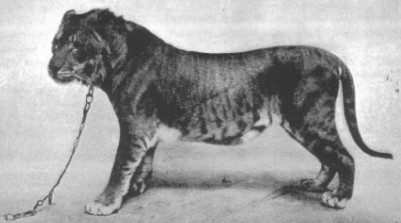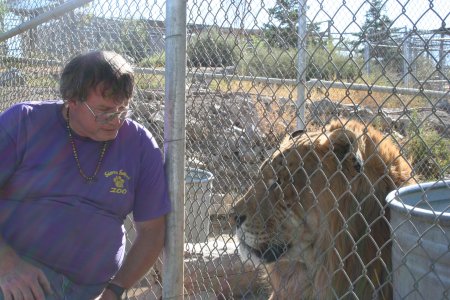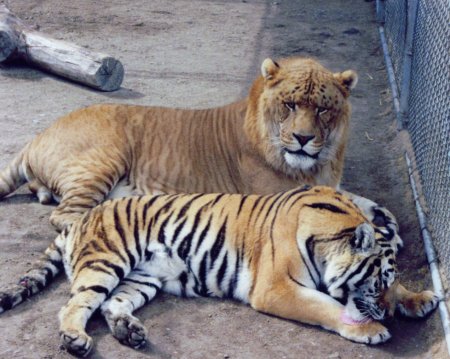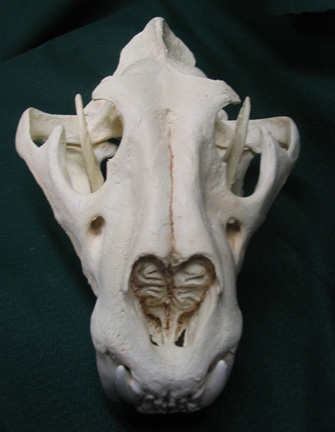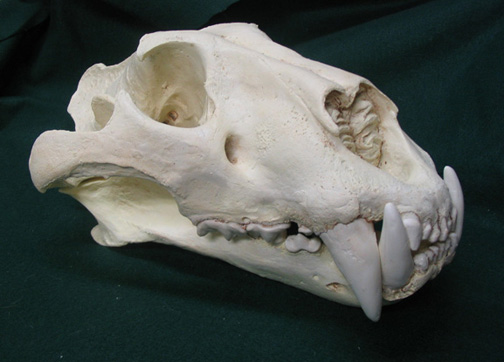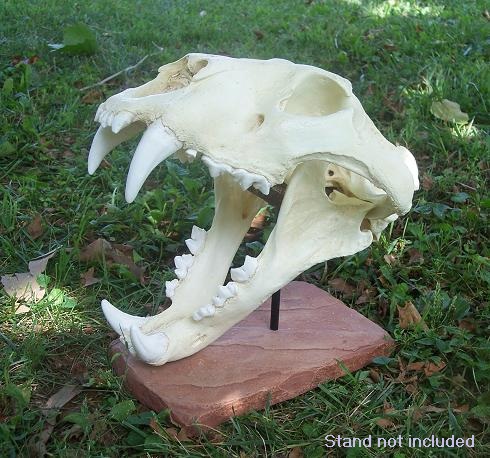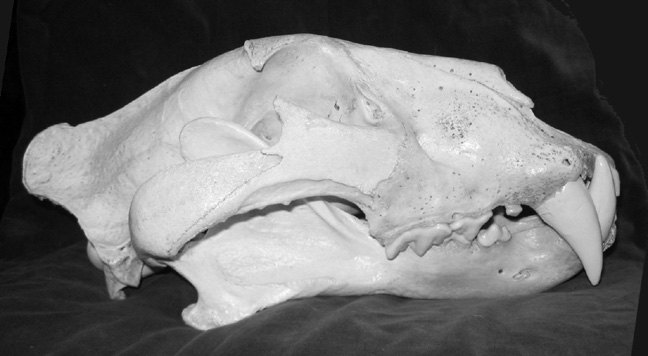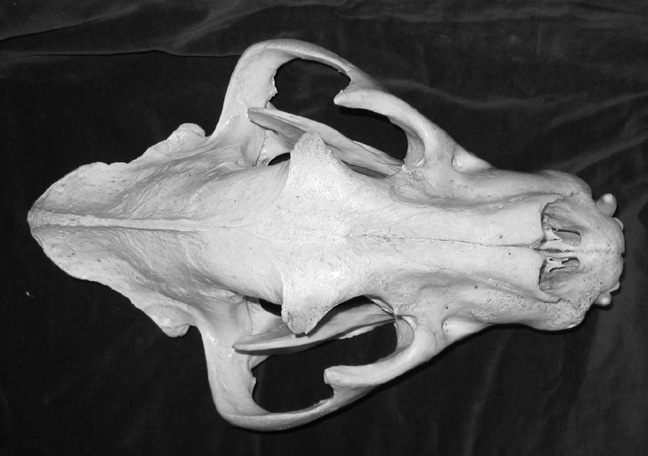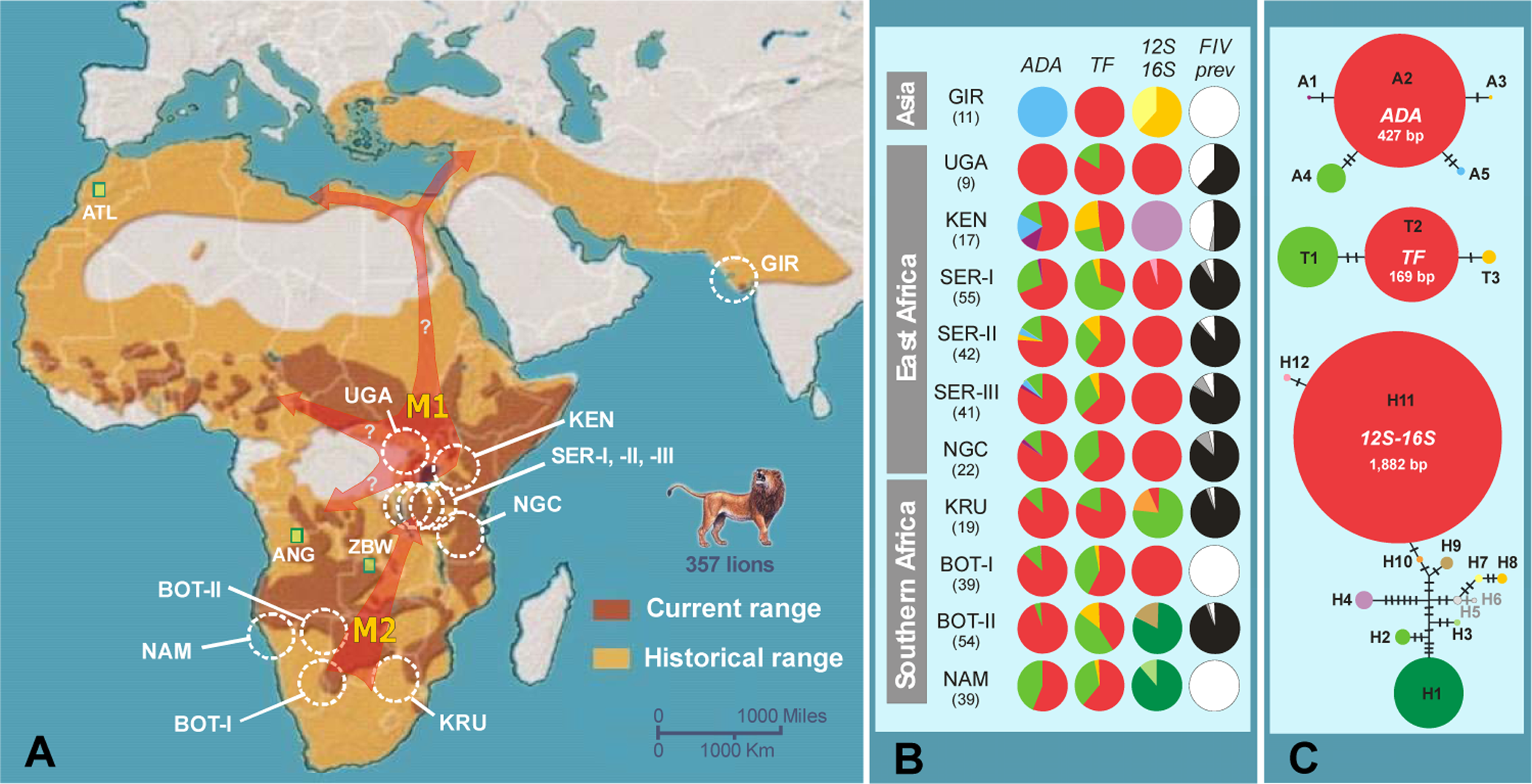This topic provides the first verified measurements of a Liger, the largest on record according with Guinness (2014). Also, the topic can be used to provide a database about ligers and other cat hybrids.
This is the data according with the Guinness book of 2014:
![]()
*This image is copyright of its original author
![]()
*This image is copyright of its original author
![]()
*This image is copyright of its original author
Here are more images of “Hercules”:
![]()
*This image is copyright of its original author
![]()
*This image is copyright of its original author
![]()
*This image is copyright of its original author
For comparison, here is the data of “Jaipur” the Amur tiger:
![]()
*This image is copyright of its original author
![]()
*This image is copyright of its original author
I scaled Joan smaller (in the body and in the head) than Moksha, but even then, the tiger Jaipur looks slightly larger than Hercules. You can make our own comparisons and you will see it. Besides, remember that some time before, Jaipur reached the huge weight of 465 kg (1,025 lb)!!!
It seems that these two cats are indeed the largest captive cats ever recorded. However, normally ligers are heavier than most captive tigers and lions.
As we can see, the often exaggerated body size of the Ligers (up to 360 cm in total length) is probably just that,
an exaggeration. The largest Liger ever measured and verified by Guinness was no larger than the largest captive tiger ever recorded (332 cm (tiger) against 333 cm (liger), measured in straight line).
It is true that the ligers are in fact larger than the largest wild tigers and lions, however captive specimens can and do match they sizes, although ligers reach more often the huge weights of up to 400 kg and are taller at the shoulders.
With a total length of 333 cm and a shoulder height of 125 cm, ligers are truly giants and only the largest wild tigers ever recorded reached those sizes (330 cm in total length (Mazák, 1981) and 114 cm in shoulder height (Brander, 1923)).
We can conclude that ligers are larger than wild lions and tigers, that captive lions and tigers can and do match they body size in extreme cases, but ligers are heavier in relation with its size, often weight up 350-400 kg, however, the largest captive tiger (Jaipur, 423 kg in 1986) was about the same weight than the largest captive liger (418.2 kg in 2013).
Ps.: The lions that apparently measured up to 333 cm quoted by Nowell & Jackson (1996) and Guggisberg (1975) are fake and/or incorrect, and now I have the evidence to prove it.
Other "giant" specimens:
1. Hagenbeck liger:
The oldest and biggest of his animals was a hybrid born on the 11th May, 1897. This fine beast, now more than five years old, equals and even excels in his proportions a well-grown lion,
measuring as he does from nose tip to tail 10 ft 2 inches (310 cm) in length, and
standing only three inches less than 4 ft (114 cm) at the shoulder. A good big lion will weigh about 400 lbs - Mr Selous gives the length of a lion shot by himself as 9 ft 11 inches, its height as 3 ft 8 inches, and its weight as 410 lbs - and it is probably that in
very exceptional cases lions may attain 450 and even 500 lbs.
But the hybrid in question, weighing as it does no less than 467 lbs (212 kg), is certainly the superior of most well-grown lions, whether wild-bred or born in a menagerie.
![]()
*This image is copyright of its original author
Source: ANIMAL LIFE AND THE WORLD OF NATURE, "LION-TIGER HYBRIDS" (June 1902-1903) by A H Bryden.
Link: http://www.messybeast.com/genetics/hybrid-history.htm
2. Cubanacan from Guinness:
The Calcuta Zoo first tigon was Rudhrani, born in 1971, was mated to an Asiatic lion called Debabrata and produced 7 li-tigons in her lifetime. Some of these reached impressive sizes - a li-tigon named
Cubanacan (died April 12th, 1991)
was believed to weigh at least 800lb/363 kg, stood 52 inches/1.32m at the shoulder and 11.5ft/3.5 m total length (1994: GBWR "largest litigon").
![]()
*This image is copyright of its original author
Source: Guinness Book of World Records, 1994_Largest Li-tigon.
Link: http://www.messybeast.com/genetics/hyb-tigon.htm
http://en.wikipedia.org/wiki/Litigon
3. Unreliable specimens, no sources:
In 1935, four ligers from two litters were reared in the Zoological Gardens of Bloemfontein, South Africa. Three of them, a male and two females, were still living in 1953.
The male weighed 340 kg (750 lb) and stood a foot and a half (45 cm) taller than a full grown male lion at the shoulder.
Valley of the Kings animal sanctuary in Wisconsin had a male liger named
Nook who weighed around 550 kg (1,213 lb),[sup][
citation needed[/sup]] and died in 2007, at 21 years old.[sup][
citation needed][/sup] Hobbs, a male liger at the Sierra Safari Zoo in Reno, Nevada, lived to almost 15 years of age before succumbing to liver failure and
weighed in at 410 kilograms (900 lb).[sup][
citation needed][/sup]
Source: http://en.wikipedia.org/wiki/Liger
Commentary:
These above records provide an idea of the real size of these giants. There are other sources that quote a height of 366 cm standing in the hind legs, but this is an unreliable form to measure a cat, and there are no records of wild-captive tiger-lions for comparison.
The first two records were actually measured but they weights were just estimated. The
first record show a specimen no larger than a wild Amur-Bengal tiger, however at 1897, a cat of that size in captivity was practically a miracle, as all the cats suffered of bad care in those Menageries. The
second case is a double hybrid and presents the largest body size of ANY great cat in modern history. With a total length of 350 cm (straight line) and a shoulder height of 132 cm, this cat was of the same size than the largest Ngandong tiger (
Panthera tigris soloensis) and
Panthera atrox on record!!! Look his image and you will know how large these two Pleistocene cats were.
The third record shows three specimens that are presented in Wikipedia with NO source. The first (340 kg) and the third (410 kg) specimens presents plausible weights and don’t surpass the actual record weight of Hercules (418.2 kg). At least, in the case of the 340 kg specimen, I found confirmation of the figure, so is reliable, check it out:
![]()
*This image is copyright of its original author
Finally, the liger of AROUND 550 kg is clearly
an estimation and an exaggeration. Sadly, webpages like “Ligerworld.com” not only promote the breeding of these hybrids but also propagate the myth of the existence of huge unreliable sizes, check this out:
a. Their weight can easily surpass 1000 pounds. Ligers can gain a length of 12 to 14 feet which makes this animal a huge beast.
Question: where is the confirmation or the specimens measured??? Were they sources are for this claim???
b. A liger in the 19th century was believed to be more than 1700 pounds.
But this statement cannot be confirmed. However, a liger in Wisconsin had a weight of 1600 pounds. This weight is confirmed and ligerworld.com has confirmed it from authenticated sources as well.
Question: Did the keepers actually weigh this liger or it was just estimation? Why Guinness doesn’t recognize this figure??? Confirmed by a page that creat a myth about healthy ligers that that state that ligers are “ambassadors” of conservation, well, that is the WORST source that we can found.
c. One report suggests a liger of 1200 pounds, while another report suggests that in Wisconsin, there was a liger which weighed more than 1600 pounds.
Question: Where are those reports??? A liger of 725.7 kg??? Only in them wild and sick dreams. Why no one, even Guinness, don’t knew about this cat??? Why only now than that liger is dead, they present this weight that can’t be confirmed anymore???
Source:
http://www.ligerworld.com/size-of-the-ligers.html
http://www.ligerworld.com/biggest-liger-...orded.html
Finally, Ligerworld.org present a pretty list of liger weights, however they forget to say that ALL of them are just estimations (most of them very gross), sadly some people, even a few dear cat-fans in the AVA forum choose to believe this silly estimations that are not based in any facts.
The famous liger Hobbs was estimated at about 900 lb (408 kg), and some people even dare to estimate him at 1000 lb (453.6 kg) but he seems no near as large and heavy as Hercules (418.2 kg).
Check him:
![]()
*This image is copyright of its original author
![]()
*This image is copyright of its original author
With a tigress, he doesn’t look excessively large:
![]()
*This image is copyright of its original author
Check this page about Hobbs:
http://www.lionlamb.us/hobbs.html
Conclusion:
It is obvious that this pages like Ligerworld.com and some others fan-pages contribute to hence the myth of huge cats over 500 kg in captivity, besides, they promote the breeding of ligers like if they had some conservation value, with excuses like that they are “ambassadors” of the conservation or that they attract people that “donate” money for the “conservation” of tigers and lion in the wild.
The evidence suggests that the male liger measure between 300-333 cm in total length in straight line and can reach a height of up to 130 cm. The weight is issue is a difficult business, but at this time, the heaviest Liger actually weighed in all history reached about 420 kg.
All those claims of heavier and longer ligers most be treated like gross exaggerations, like the existences of white sharks of over 10 m in length or modern eagles of 5 m in wingspan.
![]()
Skulls
Sadly, I found only three skulls in the web, however, I think that there is something weird here, check this:
1. Length 17", width 11" – 432 cm by 279 cm.
[img]http://schreckensart.homestead.com/files/liger_skull.jpg" class="lozad max-img-size" alt="" title="">
*This image is copyright of its original author
![]()
*This image is copyright of its original author
![]()
*This image is copyright of its original author
Source:
http://schreckensart.homestead.com/skullscats.html
2. Length 16 5/8" long by 10 7/8" wide – 422 cm by 276 cm.
![]()
*This image is copyright of its original author
Source:
http://www.angelfire.com/mi/dinosaurs/cats.html
3. Approx. skull length 17" – about 43 cm.
![]()
*This image is copyright of its original author
![]()
*This image is copyright of its original author
Source:
http://schreckensart.homestead.com/NHbigcats.html
I think that these three skulls are the same model, after all the three specimens almost match with them sizes. The problem is the use of inches, which like in “Bone Clones”, are only APPROXIMATED sizes, not the actual size which is better measured in millimeters or centimeters.
Even taking the largest size, the top figure of 432 cm is just like the largest lion skull, so it is not enormously large. The figure is important and suggests, again, that the “large” size of the liger is more on the body weight than in the body size itself. Sadly, as we don’t know the actual size of the previous owner, we can’t compare it with other lion-tiger specimens.











